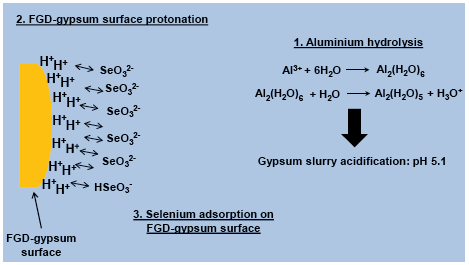Patricia Córdoba, María Eugenia González, Aixa González, Mercedes Maroto-Valer, Natalia Moreno, Noelia Sepúlveda, Rodrigo Navia and Xavier Querol
The use of a Flue Gas Desulphurisation (FGD)-gypsum as material for selenium removal in re-circulated waters from a wet limestone FGD system with water re-circulation to the scrubber and with use of an Al-additive, to increase SO2 emission abatement efficiencies, has been evaluated by adsorption studies. Potentiometric titration experiments for FGD-gypsum reveal that the acidic conditions of the aqueous phase of gypsum slurry, induced by the Al-additive, result in the protonation of the FGD-gypsum surface. The adsorption isotherms of Se onto FGD-gypsum are appropriately described by the Langmuir model suggesting that Se is adsorbed by the protons adhered on FGD-gypsum surface and forms a monolayer. The removal of Se from FGD waters by the employment of FGD-gypsum is significant as prevention measure based on the management on FGD-gypsum and water streams before their production and the subsequent disposal in landfills and/or in application scenarios.

分享此文章